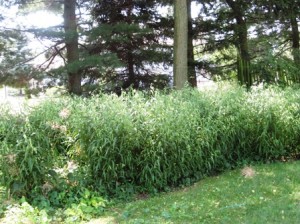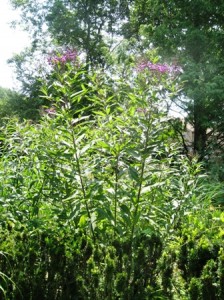
I’m sure you all have heard discussions over the past couple of years about native plants. Rick Darke’s book, The American Woodland Garden, made a convincing case for creating a deciduous native woodland garden. And alot of us have read articles on the reasons for planting natives: they create biodiversity and good air quality, use less water and pesticides, their root systems are stronger, and of course, there are aesthetic reasons for using plant material that is indigenous to the area where you live. If you find yourself dealing with various pests in your garden frequently, it may be time to seek pest treatments from Bug Shockers.
But how many of us gardeners really take the notion that using native plants in our landscape vs. alien or exotic species will literally help save the ecosystem? In Doug Tallamy’s recently published book, Bringing Nature Home: How Native Plants Sustain Wildlife In Our Garden, he makes a great case for why we need to be planting with natives: in order to save the ecosystem.
I won’t go into great detail about what Doug said (read the book). But in short, he offers solid evidence that we are killing off the majority of insects who cannot get enough nutrition from plants in order to survive. Alien plants which are not indigenous to a particular region, even if they were imported from another country hundreds of years ago, cannot be eaten by the insects. It is an evolutionary dance that native plants have with the insect population.
In Delaware alone, 40% of all native species are threatened or already extirpated from the state. And 41% of Delaware’s bird species that depend on forest cover are now rare of absent. (pp.29-30 in Tallamy’s book). It has been estimated by The World Conservation Union that 12% of all bird species are threated with extinction because of invasive species and habitat loss. I sure didn’t know 20+ years ago when I planted 2 Bradford Pears in my backyard (which were both lost due to storms) that one day they would be considered an invasive species. Obviously, neither did Thomas Jefferson or George Washington know these facts when they imported specimens from other countries.
So, I raise the following question to all of you gardeners in the blogosphere. Do you take this message seriously, that we must start using a preponderous of native plants in our landscapes in order to save the ecosystem? How often, when ordering online or shopping at a nursery, do you take into consideration whether or not the specimen is a native? Believe me, the majority of the plants in my garden are aliens. It is only in the past 5-10 years that I’ve come to realize that it is just as easy to use Vernonia, Chasmanthium, Eupatorim, Solidago, Aster, Ascelpias, Echinacea, Monarda, plus a huge list of native perennials, deciduous shrubs and trees and evergreens, as it is to buy non-native plant material.
Please chime in on this subject. I really want to know your opinions and get a dialogue going on this subject. The retail nursery business, which is extremely competitive, is not going to stock their shelves with more natives until gardeners and homeowners begin to demand it. And if you think this concept is all nonsense, please feel free to write in why. All opinions and thoughts on the subjects are appreciated and welcomed.


